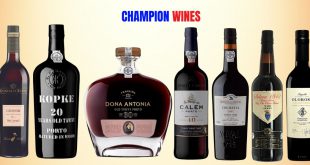PAUL PONTALLIER
22 April 1957 – 28 March 2016
By CH’NG Poh Tiong
Part II of III
This is the second of three articles to commemorate the life of my friend.

This photograph was taken in February 2001. Paul had invited me to taste batches of 100% cabernet sauvignon, 100% merlot, 100% cabernet franc and 100% petit verdot of the 2000 vintage before they were blended.
Paul Pontallier was 27 years young when he applied for and got the job as Technical Director or Winemaker at Chateau Margaux in 1983. He had not worked for another property before that. And would never worked for another until his death, although he had a few consultancies around the world.
Paul had studied with Professor Emile Peynaud and earned a Ph D from the Bordeaux Institute of Oenology. In his doctorate dissertation, he wrote about the effects of barrel ageing on red wine. Peynaud was consultant to Chateau Margaux and Pontallier was one of his most talented students.
The stars were in Paul’s favour from the very start because 1983 is one of Chateau Margaux’s finest vintages. It is, but I prefer 1985 which has become a somewhat forgotten vintage for Bordeaux. Incidentally, 1985 is also outstanding for Champagne.
The wise person that he was, Paul placed a lot of importance on doubt. He often said this.
“If you don’t doubt, you don’t learn.’ Doubt is the beginning of research.”
Paul Pontallier was also something of a philosopher and a prophet.
Let me explain that last claim. The wines of Bordeaux are put together by blending different grape varieties. To combine different proportions of several grape varieties, you have to project how the blended wine will taste 20, 30, 40, 50, even more, years later. A prophet is someone who can predict the future.
Back in 2000, I asked Paul what the lesser-known petit verdot brings to a blend.
“Why don’t you come next winter when we are doing the assemblage (blending) and we can taste petit verdot on its own before it becomes blended into the final wine?” Paul invited.
So it was that on a cold morning in early February 2001, I visited Chateau Margaux and tasted batches of cabernet sauvignon, merlot, cabernet franc and petit verdot. As it is the last to ripen, petit verdot is not a popular variety because of the risk involved in the summer being not long enough for it to fully ripen.
But, when petit verdot ripens fully, its quality is marvellous. The variety contributes tannin, colour and flavour. Just a small percentage of petit verdot can transform a wine. The aromatics are exotic and include violets. The texture is caressing.

One of the greatest vintages of Chateau Margaux, 1959 is fully evolved, perfumed, very persistent and long, and incredibly fresh.

Although Margaux 1983 is legendary, I prefer 1985 – another great vintage – which has slightly more concentration and intensity.
I don’t remember if it was that trip in 2001 that we lunched at the chateau or at the restaurant in nearby Relais de Margaux. Paul brought along 1990 which is a vintage equal to the richness of fruit and ageing potential of 1982. Even more memorable than 1990 is Chateau Margaux 1959.
Over the years, I have had it at three or four lunches with Paul at the chateau. One such occasion, proprietor Corinne Mentzelopoulos was supposed to be there too but was held back in Paris because of a family matter.
Chateau Margaux 1959 has the perfume of sandalwood. As soon as you put it in your mouth, we are impressed with its incredible vitality and unforgiving freshness. Layer by layer, the fruit unveils itself. Tobacco, leather, autumn leaves …
You may also want to read … Paul Pontallier Part III

